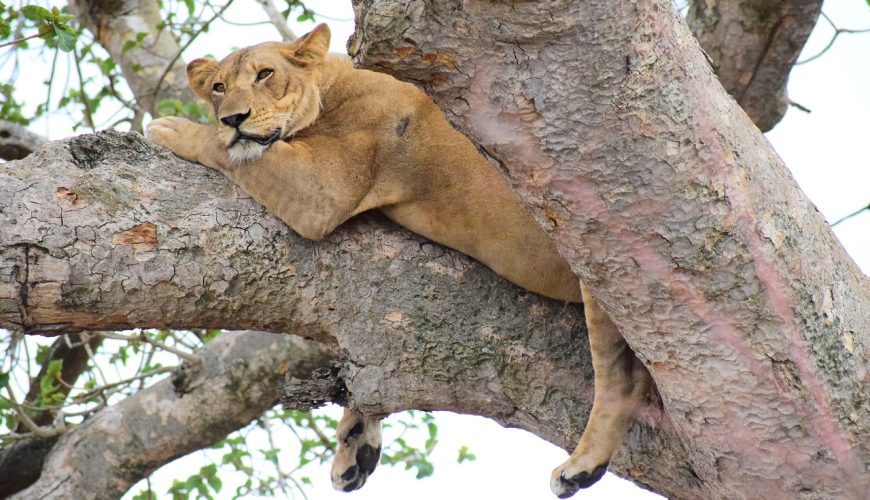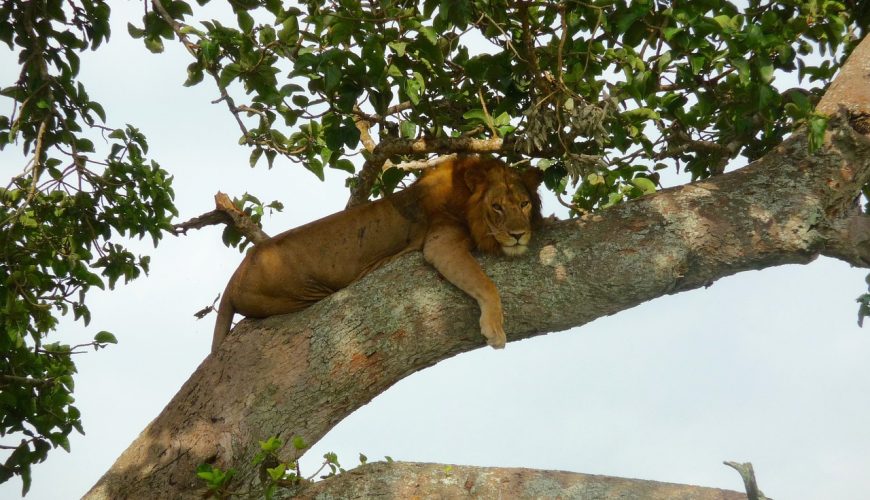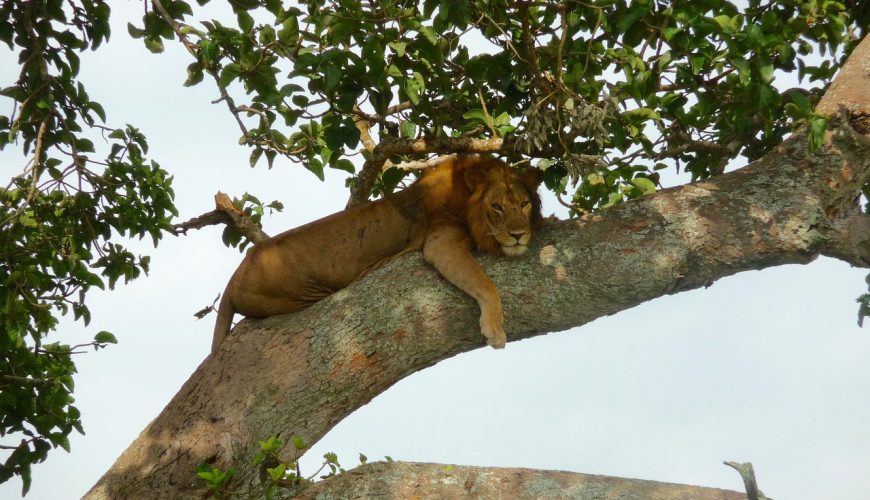People often wonder if lions can climb trees. Do they know how to climb trees, if at all? The lions rarely climb trees in their natural habitat. There are just two environments in the world where tree climbing by lions is literally one of their normal behaviors. They can be found in two of these habitats: one in the Ishsa Sector of the Queen Elizabeth National Park in Western Uganda and another in Lake Manyara National Park in Southern Tanzania.
There are two strong reasons explaining why these lions chose to climb trees. To escape irritations by insects and the savannah heat on the ground by enjoying on the branches where they get some fresh air. These reasons are more supported due to the fact that these tree climbing lions stay on the ground in the night and when it rains both situations eradicate insects and heat. However, the above reasons may be uncertain, there is no contradicting the fact that enjoying in the trees helps them to keep overlooking to their food.
Common food typically comes from feeding animals like antelopes, buffaloes, and others like lions. They are known for having learned the behavior of climbing trees, which they want to pass on to their young cubs. This is why they exert all of their effort. The only places in Tanzania and Uganda where you have an opportunity to see tree climbing lions are Queen Elizabeth National Park in Uganda and Lake Manyara National Park in Tanzania. These unusual tree climbing lions can be found in Uganda’s Queen Elizabeth National Park. the south ishasha sector of Queen Elizabeth national park offers tourists the chance to see more than 50 lions hanging out all day in the area’s large candelabrum trees. Additionally, they are initially quite difficult to notice when examining local trees and skin tones.
However, a safari guide can help you see them dozing or scowling out at the wilderness while they’re dozing on tree branches. Observing the large cat curled up on the branches is quite entertaining. In the ishasha sector, the Uganda kob is a common mammal, and as such, it is the primary prey of these lions.
The number of climbing lions is severely declining. Because of the serious problems that humans provide to all lions, even those that climb trees, 11 lions were discovered dead in Uganda’s Queen Elizabeth National Park in April 2018. It is believed that these lions were poisoned.
For various causes, including trespassing into the national park to use the area for agriculture, poaching, hunting, and illicit wildlife trading, people continue to endanger lions. The people in charge put a lot of effort into stopping trespassing and poaching, but the success of these efforts depends on many different forces coexisting peacefully. The best appeal to conservation in Uganda so far is working together with various patterns, local communities towards a unique conservation goal. All this is set to accomplish happy days for the tree climbing lions, as the work goes on and we all desire for a better conservation result.
The thing that intrigues people about the tree-climbing lions is not how their social systems are set up or what they consume, but rather how they differ from other lions. They are comparable to all other wild lions in terms of social, feeding, physical, and repopulation traits. Since lions are known to be aggressive mammals, the best thing you can do is to always look from a safe distance. The presence of tree climbing lions in the anime series Ishak greatly enhances the experience that tourists have in Queen Elizabeth National Park.




Comment (0)